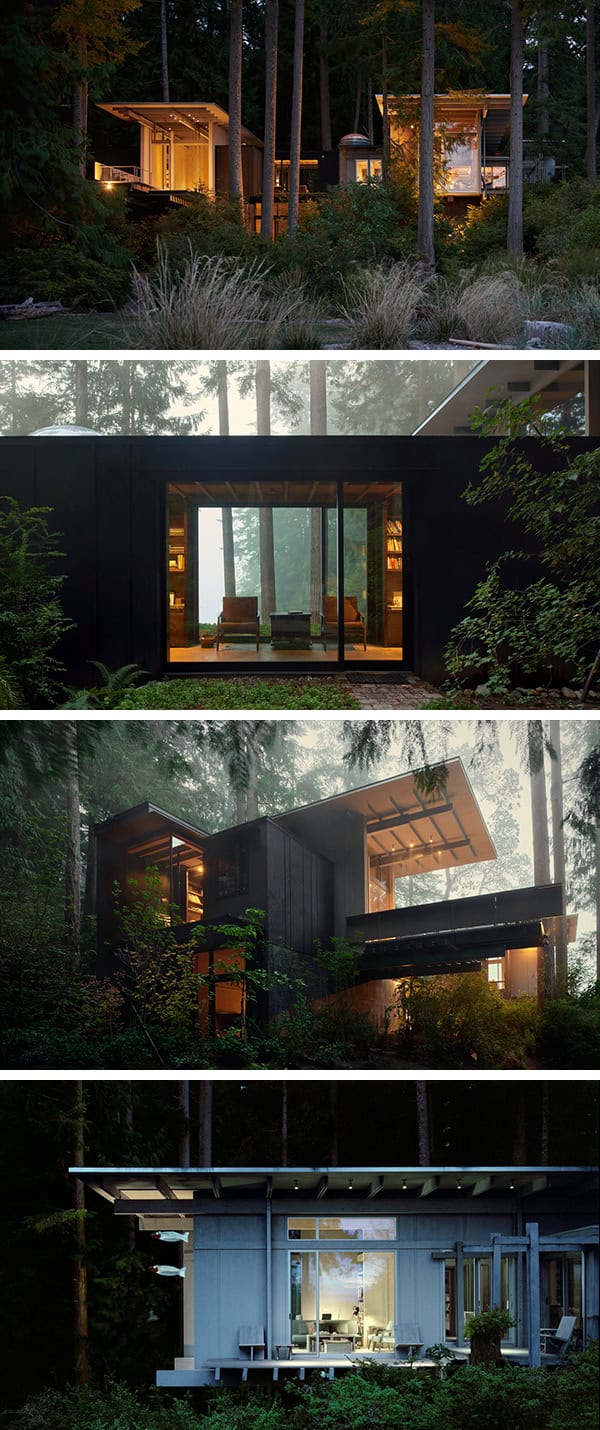Project: Cabin at Longbranch
Architects: Olson Kundig
Location: Longbranch, Washington, USA
Area: 1,200 sq ft
Photographs by: Kevin Scott, Benjamin Benschneider, courtesy of Olson Kundig
In a world where everyone strives to build something as quickly as possible, displaying stellar patience is extremely rare.
Architect Jim Olson from Olson Kundig, is one of those patient men who will do what they have set out to, no matter how long that takes them.
In 1959, Olson began to build himself a cabin in Longbranch, Washington. The small bunk house that he began with back then has been slowly and carefully transformed into a stunning, modern lake house. How long did it take him to do it? 55 years! That’s almost an entire lifespan but Olson finished what he set out to do, and that is something that deserves all the admiration it gets.


From the architects: “Jim Olson’s reverence for nature and admiration of the site’s beauty is expressed in the design of this project located on Puget Sound and nestled amidst the towering fir trees of an ancient forest. What began as a 14-foot-square bunk house built in 1959 has morphed through subsequent remodels in 1981, 1997, 2003 and 2014 into a modest yet highly livable weekend retreat. Each successive addition and remodel has reused and integrated the previous structure rather than erasing it to reveal the cabin’s architectural history.”
“At the age of eighteen, Olson began work on a bunkhouse for his family in Longbranch. Since then, he has continued to expand the small structure into both a private retreat and a touch point for his work worldwide.
The cabin is intentionally subdued in color and texture, allowing the lush natural surroundings to take precedence. Simple, readily available materials are used throughout: wood-framed walls are sheathed in plywood both inside and out; doubled pairs of steel columns support glulam beams that, in turn, support an exposed roof structure; and interior fir flooring becomes outdoor decking with additional spacing.
The rooms themselves are essentially a set of boxes set underneath a unifying roof; together, they create a single form that is grounded onto the hillside and projects out over the landscape. The living room’s large 11’ x 13’ window not only frames the view of the adjoining meadow and Puget Sound but visually blends the indoors and outdoors.
Strategically placed sliding doors, windows and a domed skylight over the bed provide constant contact with nature. The design accommodates three mature trees that have been allowed to grow through openings in the deck, one of which exits through an opening in the roof.”
This website uses cookies.